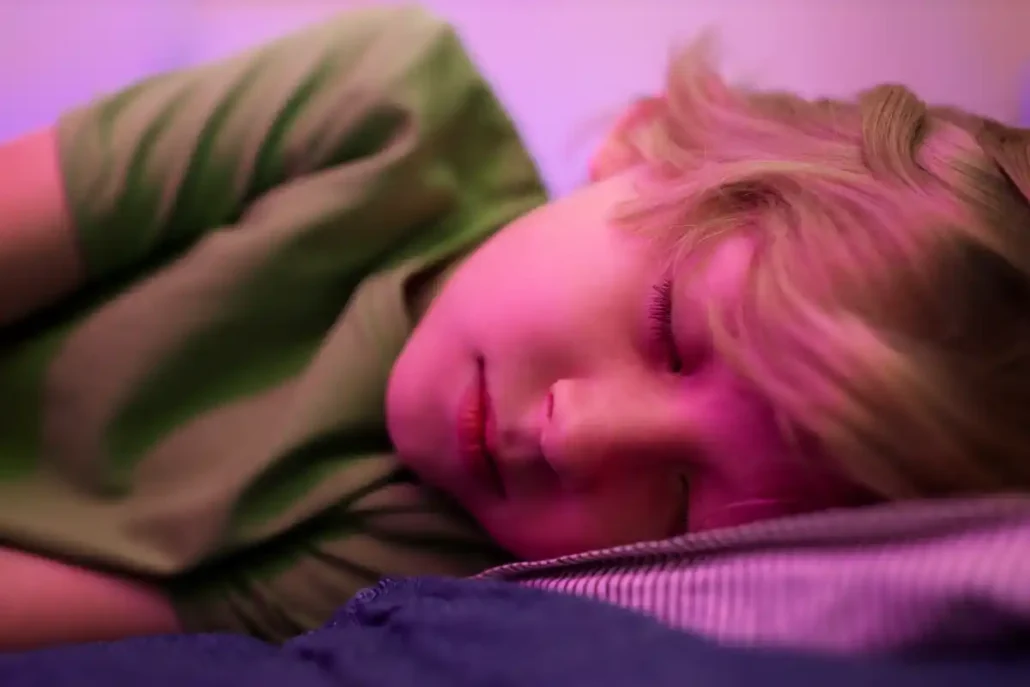Sleep Anxiety: Breaking the Cycle of Stress-Related Sleep Problems
STRATEGIES FOR RESTFUL NIGHTS
In today’s nonstop world—where work, family, and responsibilities pull us in every direction—it’s no surprise that falling asleep can feel like another item on a never-ending to-do list. For many, this nightly struggle stems from a lesser-known issue: sleep anxiety.
As stress levels rise during the day, falling asleep at night can feel nearly impossible, creating a troubling cycle that perpetuates itself. Understanding sleep anxiety and its triggers is the first step toward breaking free from this unsettling pattern.
In this guide, we’ll delve into the nature of sleep anxiety and share practical strategies to help you reclaim your nights and enhance your overall well-being.
What is Sleep Anxiety?
Sleep anxiety is a feeling of stress or fear about going to sleep. Most of the 40 million people with anxiety in the U.S. also have a form of sleep disruption like sleep anxiety.
Unlike insomnia, which refers to the inability to fall or stay asleep, sleep anxiety is the mental spiral that begins before your head even hits the pillow. It’s a cycle—worrying about sleep can keep you awake, and lack of sleep can fuel even more anxiety.
The Cycle of Anxiety and Stress
Daily stress and nighttime sleep are closely related. The stress-sleep cycle begins when elevated stress levels during the day make it difficult to fall or stay asleep at night, disrupting your sleep quality. This disruption can lead to a cycle of stress and sleep disturbances, where the lack of sleep further increases stress, creating a troubling pattern that can lead to more profound sleep disturbances or conditions such as insomnia.
Signs of Sleep Anxiety
Please don’t wait to speak to your doctor about sleep anxiety before it negatively affects your quality of life. The sooner you recognize sleep anxiety, the more beneficial interventions can be. Here are a few of the most common signs of sleep anxiety:
- Difficulty Falling Asleep
- Frequent Nighttime Awakenings
- Worrying About Sleep
- Racing Thoughts at Bedtime
- Physical Symptoms
- Nightmares or Disturbing Dreams
- Daytime Fatigue or Sleepiness
- Impaired Concentration or Memory
- Mood Disturbances
- Avoidance of Sleep
Identifying Triggers
Actions or thoughts that trigger emotions based on a person, place, or situation can lead to sleep anxiety. For instance, work-related stress, relationship issues, financial worries, or health concerns can all trigger sleep anxiety. It’s important to recognize your specific triggers to stop the sleep-stress cycle before—or as soon as—it starts.
I’m Stressed
- Day-to-day Activities: Work, relationships, family, money, etc.
- Emotional Issues: Emotionally-charged problems keep your brain churning.
I’m Anxious
- Depression and Anxiety: Your brain won’t let you get to sleep or stay asleep.
- Generalized Anxiety Disorder (GAD): Often makes itself known at bedtime.
- Panic Disorder: Panic attacks are difficult to sleep through.
I’m Overstimulated or Unregulated
- Excessive Screen Time: TVs, smartphones, computers, or tablets that emit blue light are too stimulating before bed.
- Caffeine and Alcohol Use: Affects sleep quality and increases anxiety.
- Lack of Routine: Disrupts the body’s internal clock and can cause increased nighttime anxiety.
I’m Medically Susceptible
- Chronic Health Conditions: Asthma, chronic pain, or heart issues can cause you to worry that symptoms might worsen overnight.
- Side Effects of Medication: Can cause increased alertness or restlessness.
I Need a Better Space
- Sleep Environment: A bedroom that’s too hot, cold, noisy, or uncomfortable.
- Associations with Sleep: Multiple nights of sleeplessness due to anxiety.
Tips to Break the Sleep Anxiety Cycle
Now that we’ve identified the most common triggers of sleep anxiety, how can you better prepare yourself to handle them when or if they arise? The Better Sleep Council experts have some great tips below.
Put Pen (or pencil) to Paper
Journaling is a great way to release stress or anxiety. Keep a notebook by your bed and jot down things that pop into your mind when you struggle to fall asleep at night. Make a few notes if you wake up during the night. Daytime stress can cause you to have trouble sleeping as well. Carry a notebook with you to record your feelings throughout the day.
Recording and tracking your symptoms and triggers can help you recognize patterns so you can change your lifestyle. A qualified therapist can also help with small or large adjustments to ease your anxiety at night.
Relax Your Mind
Mindfulness can make you more aware of your thoughts and feelings, reducing stress and anxiety. Mindful breathing is an easy way to rein in your thoughts or feelings by focusing on your breath. To breathe mindfully:
- Sit or lay down in a comfortable position.
- Close your eyes and take a deep breath through your nose while counting to four.
- Hold your breath for a count of four. Exhale slowly through your mouth while counting to six.
- Repeat this process for five to ten minutes.
Meditating is a popular way to practice mindfulness. Try these beginner meditations to ease sleep anxiety. Start each meditation by lying down and closing your eyes:
- Body Scan: Focus on the sensations in your feet and gradually begin to notice other parts of your body until you reach the top of your head. Repeat.
- Loving-Kindness: Repeat the phrases, “May I be safe, may I be happy, may I be healthy, may I live with ease,” to show compassion toward yourself. Repeat or offer your wishes to family, friends, or acquaintances.
- Mantras: Repeat words or phrases such as “I am loved,” “peace,” This too shall pass,” or “kindness.” Repeat the mantra silently or aloud as you inhale and exhale.
- Guided Imagery: Imagine a calm, serene place (beach, forest, a favorite place). Explore the space with your mind and use your senses (sight, sound, smell, taste, touch) to immerse yourself for several minutes.
Relax Your Body
You’ve probably heard the phrase, “I can feel the stress in my shoulders” or something similar. Relaxation techniques, gentle stretches, and yoga are great ways to signal to your body that it’s time to get ready for bed—or help you get back to sleep.
Progressive muscle relaxation is a technique that reduces physical tension by tensing and relaxing muscles. You can focus on muscles that frequently bother you or start with your toes and move up to your face. All you do is tense each muscle for about five seconds and release. Repeat with the same muscle or continue up your body.
Simple stretches such as bear hugs, neck stretches, seated forward bends, and yoga poses like child’s pose, cat-cow, and seated spinal twist can all help relax different muscles before bed.
Check Out the Better Sleep Council Blog “4 Bedtime Stretches for Better Sleep” to Learn Out Favorite Yoga Poses
Practice Good Sleep Hygiene
Sleep hygiene encompasses all of the little (or big) habits you incorporate into your daily and nightly routines and the spaces in your home that promote restful sleep. There are countless ways to improve your sleep hygiene—from skipping your afternoon cup of coffee and putting off an email until morning to replacing your mattress or worn-out linens.
Journaling, practicing mindfulness, and relaxation techniques are all forms of sleep hygiene. Let’s take a glance at a few more to help reduce sleep anxiety:
- Establish a bedtime routine incorporating activities like reading or listening to music.
- Set a consistent sleep schedule.
- Eat a lighter dinner in the evening.
- Choose healthy evening snacks.
- Turn off all devices one to two hours before bedtime.
- Use your bedroom to prepare for and sleep only, not work or school.
- Exercise early in the day or at least two hours before bedtime.
- Feng Shui your bedroom.
- Go shopping for a new mattress and bedroom accessories. Use this S.L.E.E.P. Test as your guide:
- Select a mattress
- Lie down in your normal sleep position
- Evaluate your level of comfort and support
- Educate yourself about each selection
- Partners should test bed together
Cognitive Behavioral Techniques
It can be challenging for some people to differentiate sleep anxiety from a poor night’s sleep. It’s not always easy to tell the difference between occasional restlessness and true sleep anxiety—especially when life is full of everyday stressors. That’s where professional support can make a real difference.
Cognitive Behavioral Therapy for Insomnia (CBTI) is a proven, highly effective approach that helps break the stress-sleep cycle. Working with a sleep specialist or therapist, you’ll learn how to replace unhelpful sleep habits, reduce anxiety around bedtime, and retrain your mind and body for restful sleep.
According to Stanford Medicine Healthcare, CBTI often delivers results quickly—many people begin to see improvement within just two to six sessions.
Specifically, a therapist can identify and work with you to understand and implement procedures related to:
- Stimulus Control
- Sleep Restrictions
- Sleep-interfering Arousal or Activation
- Foods and Substances
- A Biological Clock
Say Goodbye to Sleep Anxiety
Sleep anxiety can disrupt not only your nights but also your overall quality of life. By recognizing its signs, identifying triggers, and implementing effective coping strategies, you can break the cycle of stress and anxiety that hampers your ability to rest.
Prioritizing mindfulness practices, journaling, and creating a calming sleep environment can significantly improve sleep quality. Remember that addressing sleep anxiety is a journey—taking the first steps toward managing it can pave the way for more peaceful nights and a healthier, happier life.



